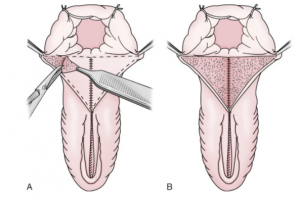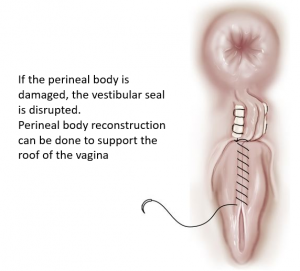Female urogenital surgery
Perineal anatomy, trauma and repair
Anatomy
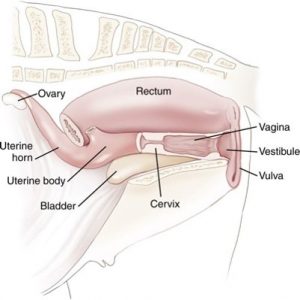
There are 3 main barriers to the uterus:
- vulvar seal created by good anatomic closure of the vulvar lips
- vestibular sphincter (vestibulovaginal ring) created by the perineal body and vaginal tone
- cervix- cervical seal created by good cervical muscle tone
The vulvar lips should normally maintain a strong seal. This can be checked by pulling the lips apart. If the seal has been sufficient, air will now enter the vagina. If air is already in the vagina, the seal was not sufficient.
The perineal body is a muscular structure surrounding the vagina. It is composed of the constrictor muscles of the vestibule and vulva. It helps maintain normal tone to the vulvar area and creates vestibulovaginal seal. It works in part, by counteracting the pull of the rectum and viscera.
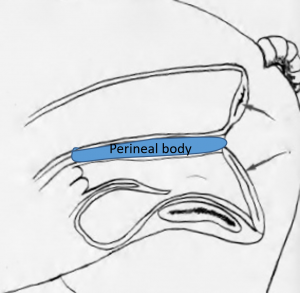
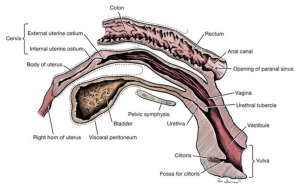
The cervix is a fibrous muscular tube that should be tightly closed except during estrus and delivery.
With trauma and/or normal aging, the three structures can be disrupted.
Vulvar seal
The vulvar seal can be disrupted by direct trauma (including foaling or calving) or with aging changes.
The normal vulva should be vertical with 75% of the vulva below the pelvic bone. Mares and cows can develop “splanchnoptosis”, a tilt to the vulva due to forward traction by the viscera (the weight of the guts drags it toward the peritoneal cavity). This is typically due to multiple deliveries or weight loss.
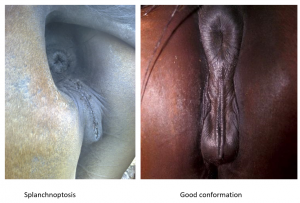
When the vulvar seal is disrupted, females develop pneumovagina (windsucking) and vaginitis. Unless the vulvar slope is severe, a Caslick’s suture is usually the first step for treatment. With a severe slope, a Caslick’s might create urovagina by impinging the flow of urine out of the vulva (urine hits the sealed vulva and flows back).
Caslick’s suture
Treatment is performance of a Caslicks suture to artificially create vulvar closure. If the female is bred, the Caslicks does need to be transected prior to parturition!
Selected Reproductive Surgery of the Broodmare
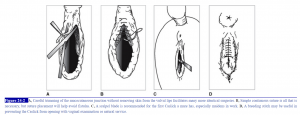
Local anesthesia is generally via a line block on each side of the vulva. This does create temporary swelling. Place sutures more closely together than normal to avoid gaps when the swelling resolves. 2-0 absorbable or non-absorbable suture on a cutting needle works well.
Perineal body transection
Because the perineal body connects the vagina to the viscera, the perineal body may need to be transected in cases of splanchnoptosis. While this weakens the vestibular sphincter, the surgery allows the vulva to return to a vertical alignment. This prevents other issues such as urine pooling and vaginitis. The surgery is straightforward, A towel clamp is placed on the vulva and the perineal body transected between the vulva and anus until the vulva is vertical. The incision is left to heal by second intention.
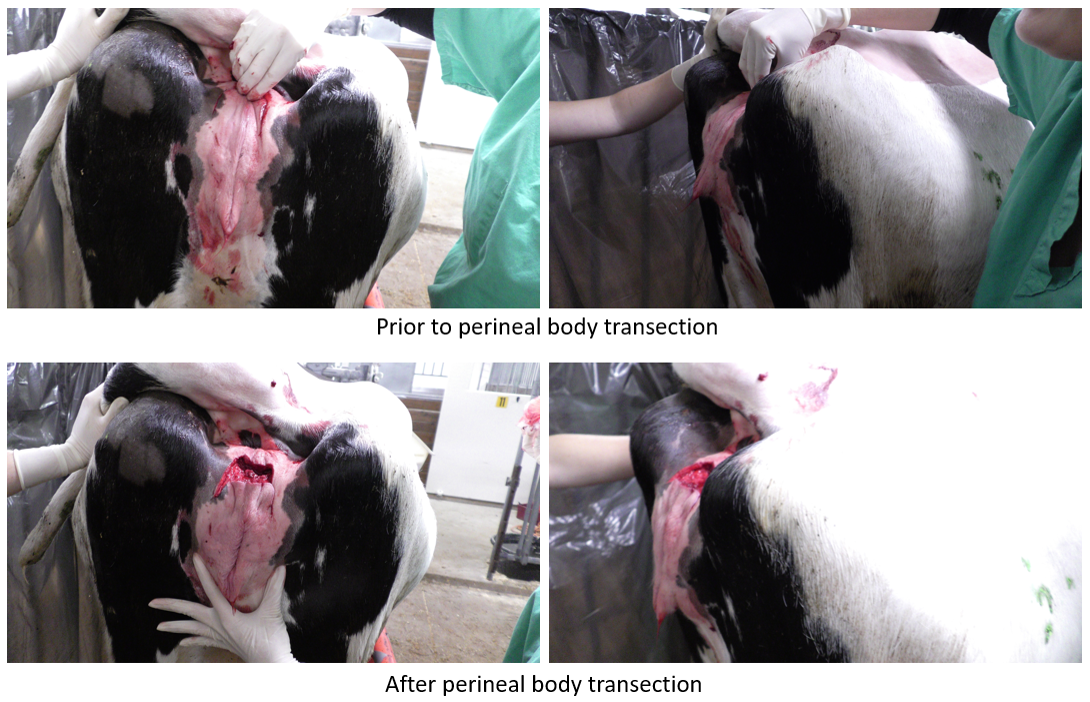
Vestibular seal
Over time or with trauma during parturition, the sphincter muscles can be damaged, resulting in a thinned or ineffective perineal body.
Perineal body reconstruction
The perineal body can be reconstructed using a similar approach as for a Caslicks. This procedure may be useful if a Caslick’s suture does not resolve the windsucking (pneumovagina) or vaginitis.
Cervical seal
Key Takeaways
Caslicks -Recreates the vulvar seal. Useful for pneumovagina and vaginitis occurring due to lack of a vulvar seal. Contraindicated if there is severe vulvar (splanchnoptosis) and if doing one would make urine hit the Caslicks and bound back into the vagina. Needs to be removed for natural service (breeding) or parturition
Perineal body transection-. Separates the pull of the viscera from the vagina. Useful for urine pooling due to severe vulvar slope and for realigning the vulva so a Caslicks can be done without creating more issues. Left to heal by second intention.
Perineal body reconstruction – Creates more support to the vestibule to help reinforce the vestibular sphincter. Useful for pneumovagina and vaginitis that is related to aging changes and/or trauma during parturition. It provides extra strength to a Caslicks at the dorsal aspect.
Cervical reconstruction – Fixes thinned areas of the cervix. Performed for defects in the cervical seal. Referral recommended
Resources
Vulvar conformation, vulvar injuries and the Caslick, equine reproduction.com-
- Note: good for caslicks and first degree tears. Not good advice for repair timing on third degree tears!
This video shows a good Caslicks but with poor instrument handling- youtube video
Perineal body transection video – youtube
Perineal body reconstruction video –youtube

